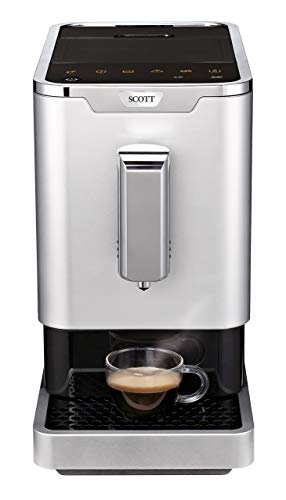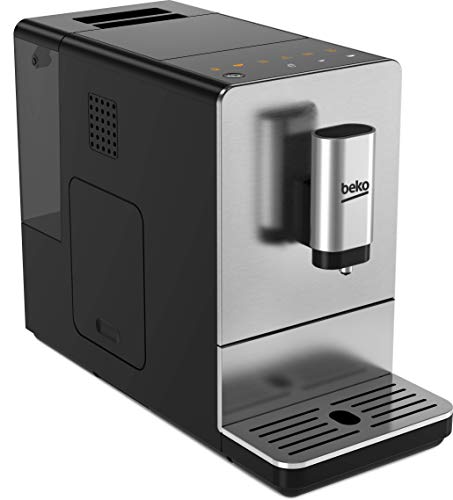The Top Reasons Why People Succeed In The Coffee Machine Beans Industr…
페이지 정보

본문
 Whole Bean Coffee Machine Beans
Whole Bean Coffee Machine Beans If your customers are conscientious about their environmental impact They may be disappointed to learn that whole automatic bean to cup coffee machines coffee machines create many waste products in the form of grounds.
If your customers are conscientious about their environmental impact They may be disappointed to learn that whole automatic bean to cup coffee machines coffee machines create many waste products in the form of grounds.Beans have a great flavour and can be kept for a long time in an airtight, dark container.
1. Roasted Beans
The first coffee machines that use beans beans harvested are green and therefore cannot be used for bean to cup coffee machine Home brewing your morning cup of coffee until they are roasted. Roasting is a complicated chemical process that transforms the raw beans into the deliciously flavored aromatic coffee we drink every day.
There are different roasts that determine the flavor and strength of brewed coffee. The different roast degrees are determined by the length of time that beans are roasted for. They can also affect the amount of caffeine that is present in the final beverage.
Light roasts are roasted the fastest time possible and are distinguished by their light brown color. They also lack oil on the beans. Around 350o-400o, the beans will begin to steam due internal water vapors being released. You'll hear the first crack shortly thereafter. The first crack is a sign that beans are ready to be brewed.
During roasting, sugars are caramelized and aromatic compounds form. These volatile and non-volatile substances are the components that give coffee its distinctive flavor and aroma. During this process, it is important to avoid over-roasting the beans, as they lose their characteristic flavor and could turn bitter. After roasting, beans can be chilled by air or water.
2. Water Temperature
When you're brewing coffee, temperature of the water is one of the most important aspects. You could end up with bitter coffee when you use too hot water. If you use too cold water you could end up with weak, or sweet, coffee. A good guideline is to use filtered or bottled water, in the event that you require it, and to heat your equipment prior to making your coffee.
The more heated the water, more quickly it dissolves things like oils and flavor compounds from the coffee grounds. The ideal temperature for brewing coffee is between 195 and 205 degrees Fahrenheit. This is just below boiling point. This temperature range is very popular among coffee professionals across the world and is compatible with the majority of methods of brewing.
The precise temperature of the brewing process isn't always the same, since some heat is lost via evaporate. This is particularly applicable to manual methods, such as pour over and French press. The final temperature of the beverage can also be affected by differences in the thermal mass and the material of brewing equipment.
In general, a hotter brew temperature will produce a stronger cup of espresso but it's not always for all sensory characteristics. In fact, some research suggests that bitter, chocolate, roast, and ashy flavors are more intense at higher temperatures of brewing, while other flavors like sour taste decrease with temperature.
3. Grind
Even the best beans, ideal roast and fresh filtered water may not yield a delicious cup of coffee if the grinding isn't handled properly. The size of the ground beans is an important factor in determining flavor as well as the strength and extraction rate. This is a crucial aspect to be controlled to allow experimentation and maintain consistency.
Grind size refers to the size of the ground beans following their being crushed. Depending on the method of brewing and the type of coffee, different grind sizes are optimal. For instance, coarsely-ground coffee beans will yield an espresso cup that is weak and a more finely-ground grind will give you an espresso that is bitter.
It is important to choose a grinder that can provide uniform grinding. This will ensure the best consistency. Burr grinders are the best method to achieve this, and ensure that all grounds of coffee are the same size. Blade grinders are unreliable and could result in uneven grounds.
If you want to get the most value of your espresso maker, think about buying a machine that has an integrated grinder and brewing unit. This will allow the beans to be brewed at the peak of their freshness and eliminate the requirement for grinding coffee in advance. Melitta Bialetti Mypresso offers all of these features in a stylish and modern package. It has a variety of recipes, 8 personalised user profiles and a smartphone app for full control. It also comes with an additional hopper with two compartments and is compatible with ground as well as whole beans.
4. Brew Time
If the brew time is too short this will cause underextraction. If you make it too long, you could risk overextraction. This will cause bitter compounds that ruin the delicious flavors and sugars in your cup and leave bitter and sour taste.
If you brew your coffee for too long the sweet spot of optimal extraction will be lost. This can result in a weak acidic, watery, and sour coffee. The ideal brewing duration depends on the size of the grind as well as the amount of coffee used, and the brew method.
The best bean to Cup Coffee machine Home to cup machines are those that come with a premium grinder with adjustable settings. This lets you play around and find the perfect combination of brew times and water temperature for your preferred coffees.
The brewing process consumes more energy than any other component of the coffee supply chain. It is therefore essential to know how to control the temperature of the brew to avoid waste and enhance flavor. It is still difficult to control the extraction with precision. This is due in part to the distribution of particles as well as the kinetics of dissolution and roasting process and the nature of the water etc. This study carefully varied each of these parameters and measured TDS and PE to assess how they influenced the sensory profile of the coffee. The TDS and PE values were both low however there was a slight variation between the brews, possibly due to channelling.
- 이전글Create A Colorful Drawing Of Bubbles 24.03.30
- 다음글xetra gold масштабталатын капитал инвестицияның өсуін қалай есептеу керек Litecoin бүгін сатып алыңыз немесе сатыңыз 24.03.30
댓글목록
등록된 댓글이 없습니다.
